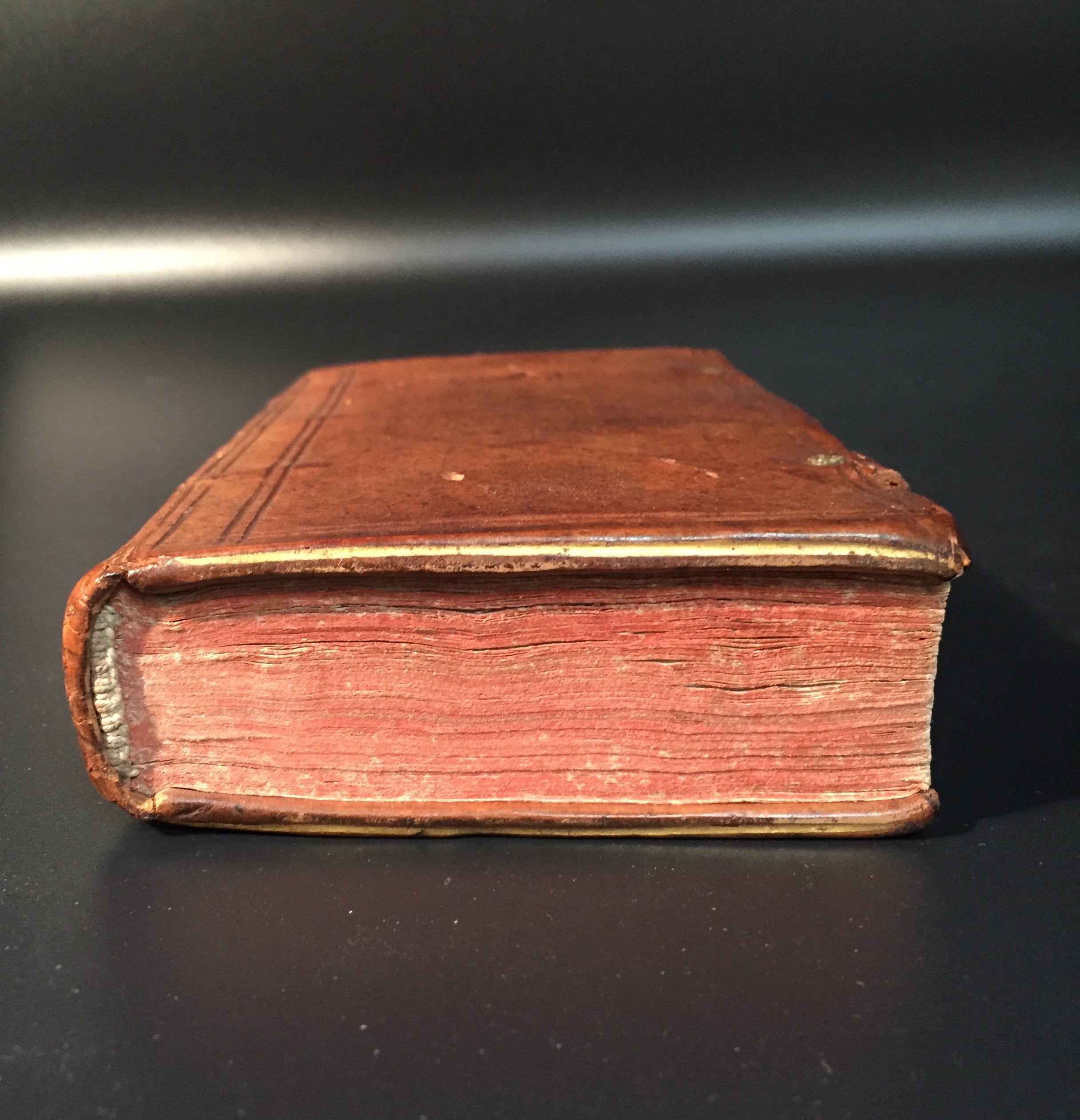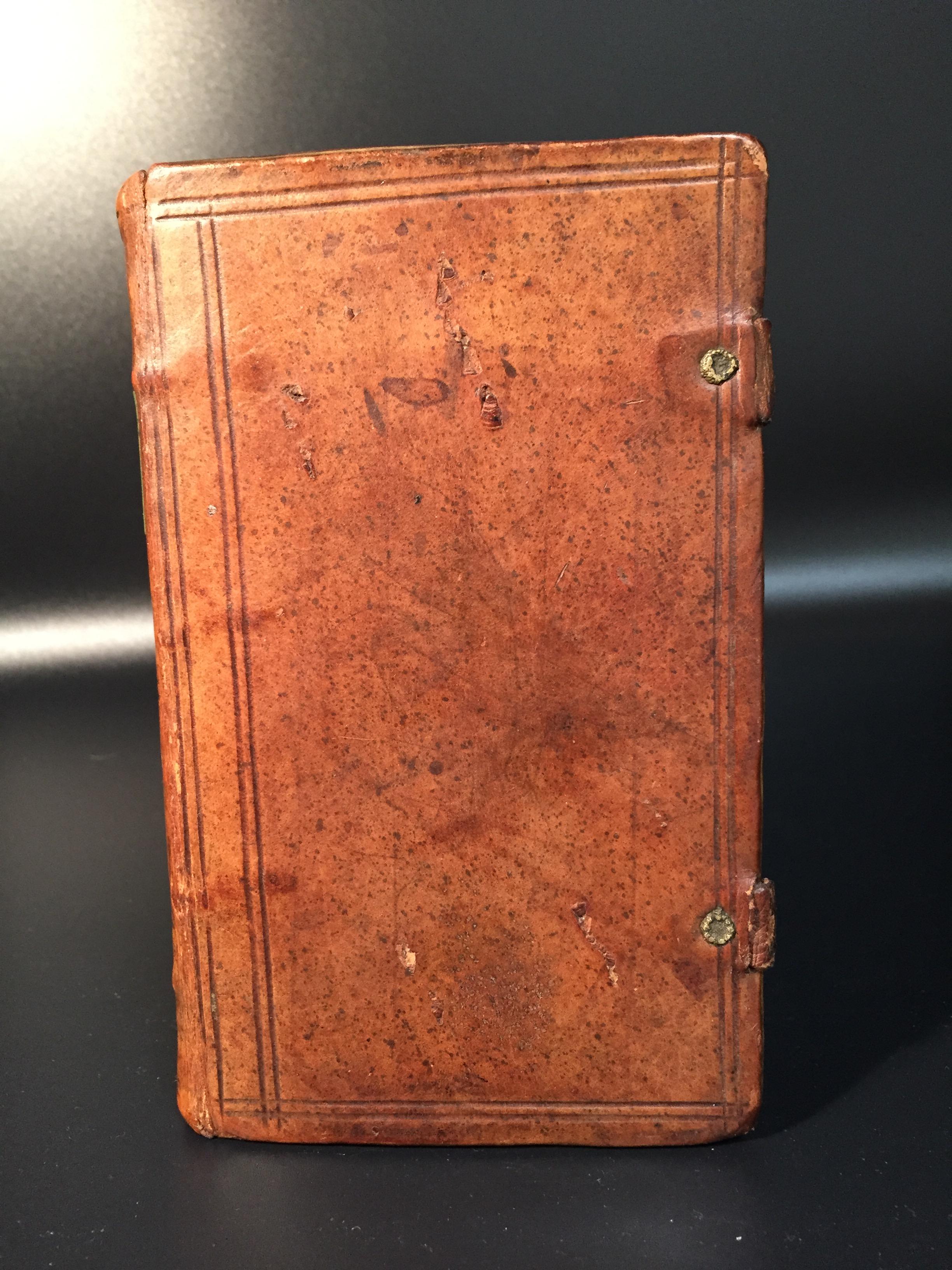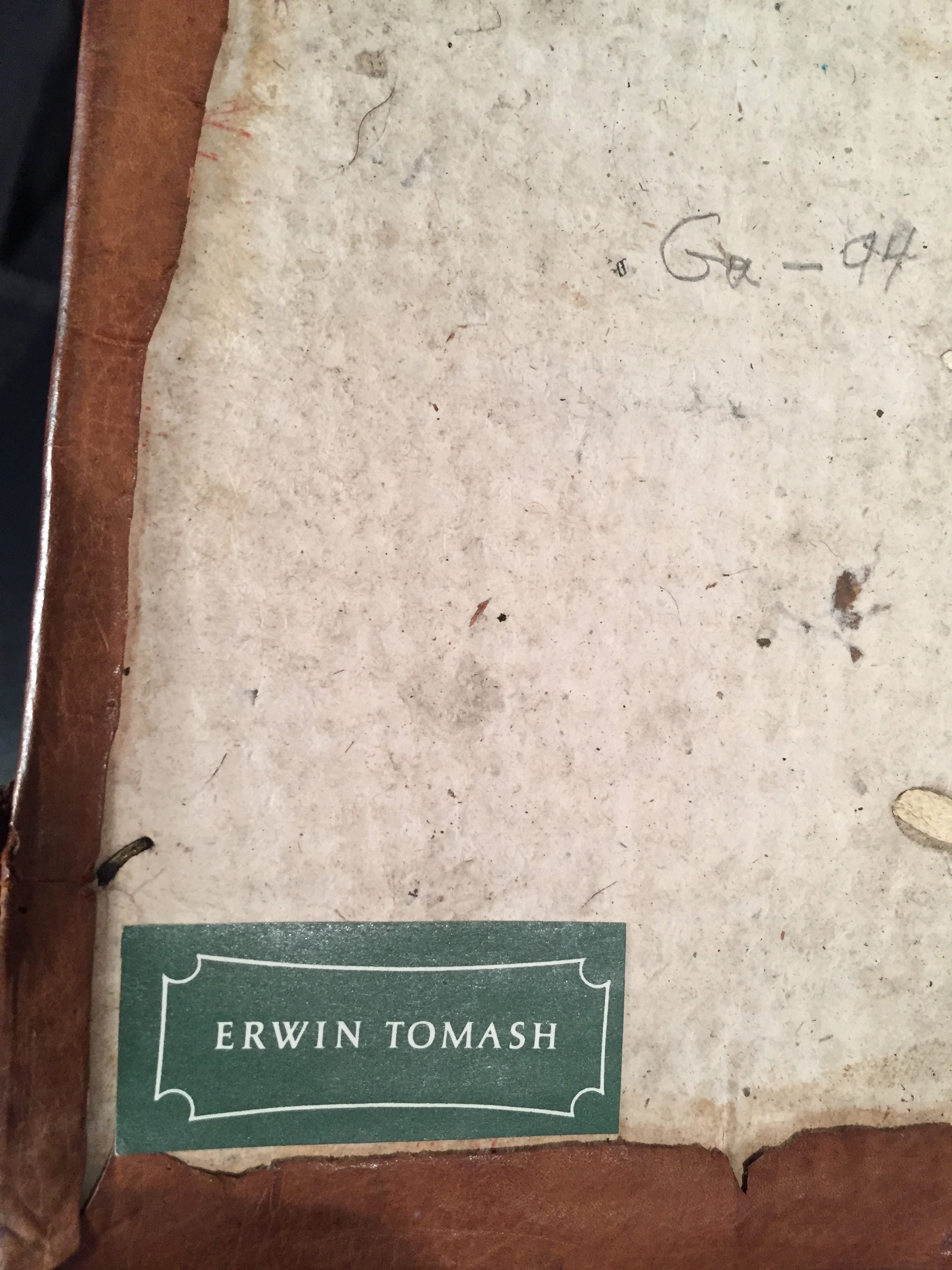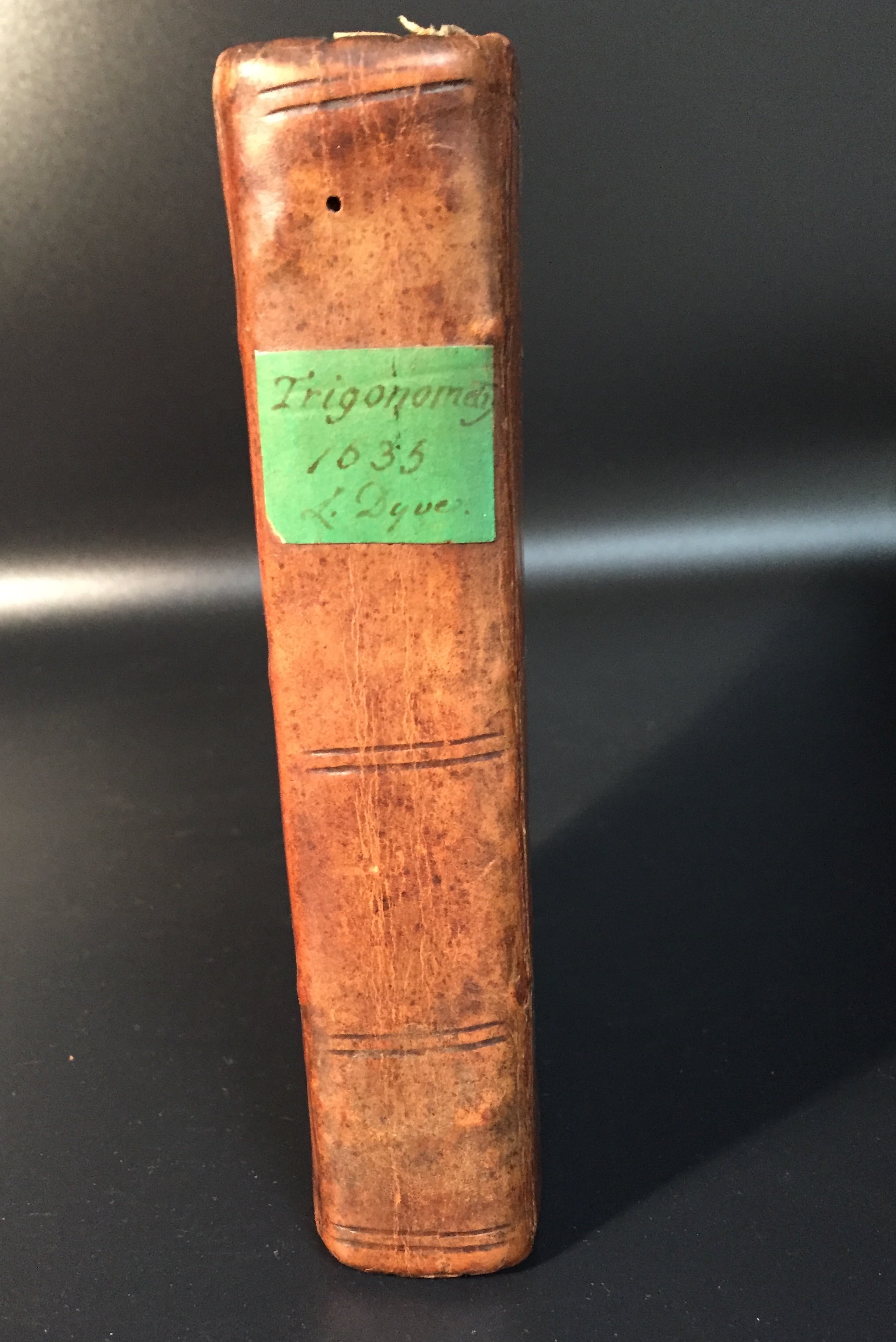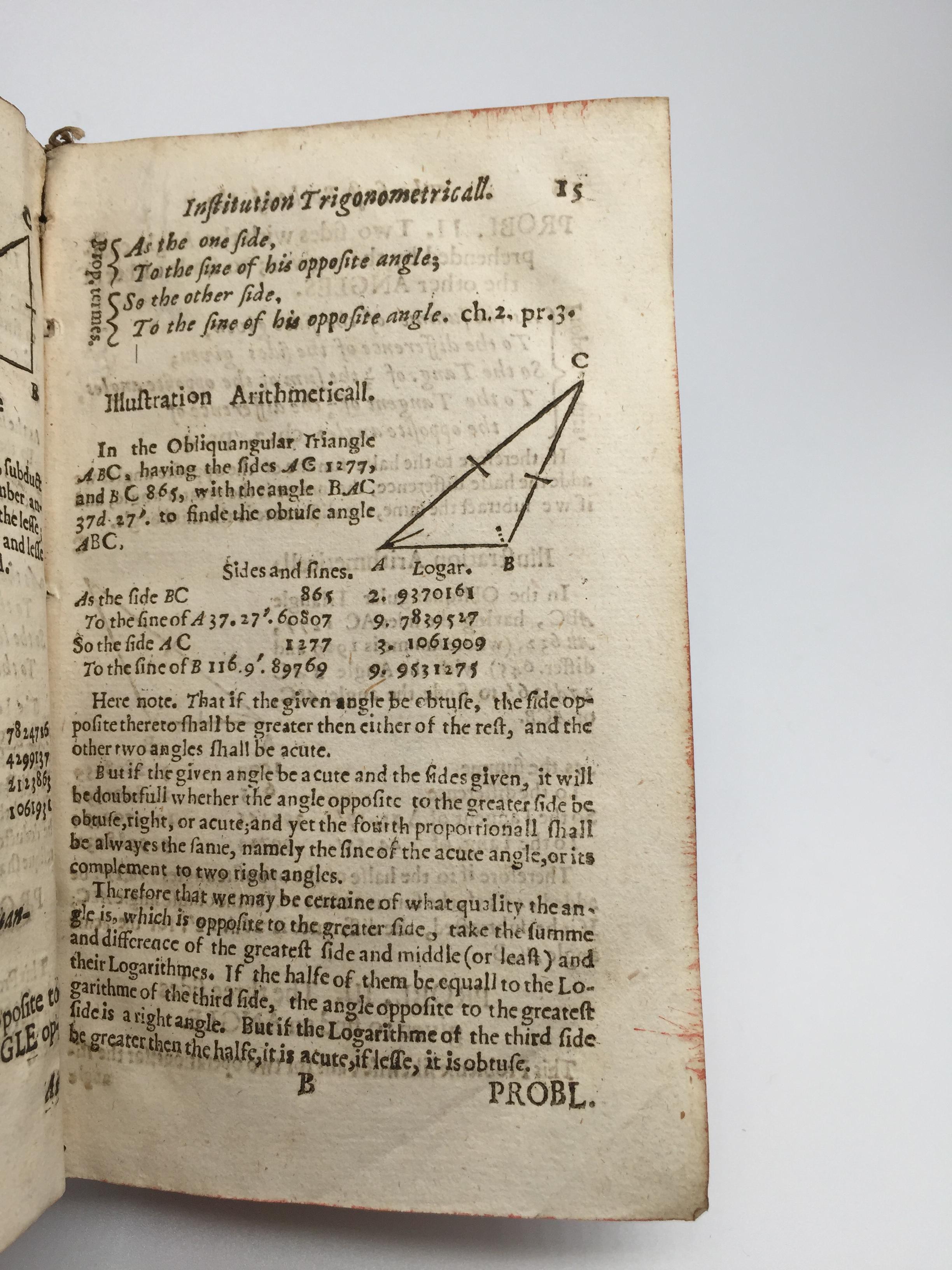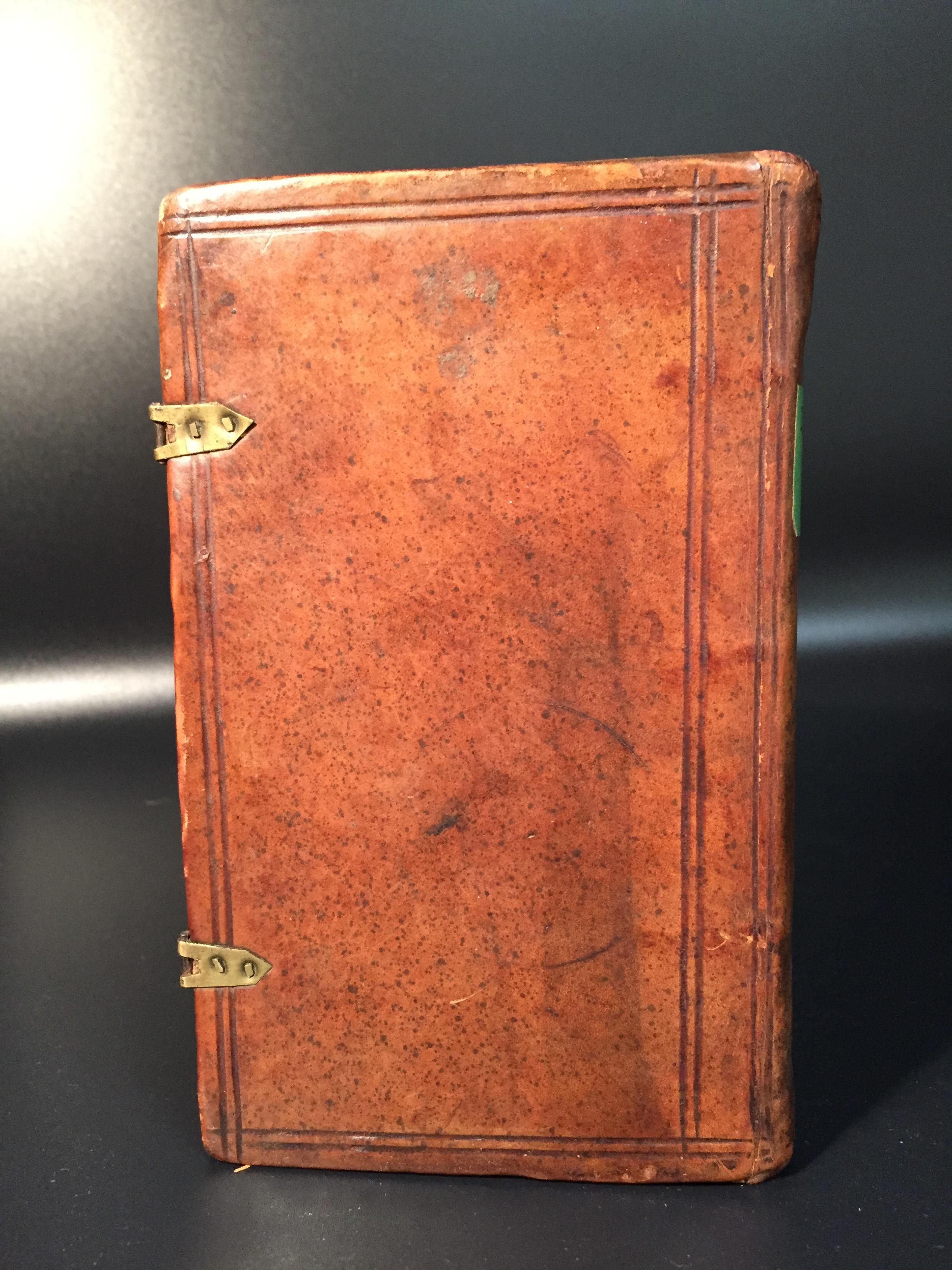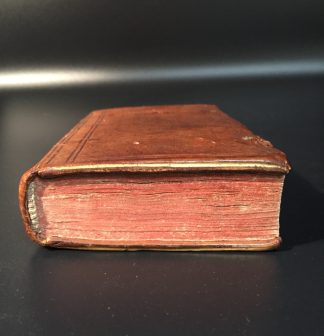GELLIBRAND, Henry
An institution trigonometricall. the doctrine of the dimension of plane and sphericall triangles.
London, William Iones, 1635£5,950.00
FIRST EDITION. pp. [ii], 78, [332]. A–E8, A–R8, S6, T–X8. [without S7-8 blank]. Roman and Italic letter. Small typographical ornament on title, floriated woodcut initials, typographical headpieces, numerous woodcut diagrams in text, 332 pages of tables, book-label of Erwin Tomash on pastedown, “Lewis Dyve” on title in an slightly later hand with price 3/6. Light age yellowing. A very good copy, crisp and clean with many deckle edges, in contemporary calf, covers bordered with a a double blind rule, spine double blind ruled in compartments, later green paper label, brass catches, remains of clasps, stubbs from a printed bible leaf a.e.r.
First edition of this important and influential work on trigonometry, with most interesting contemporary provenance. Gellibrand had been a student at Trinity College, Oxford, when he was introduced to mathematics and became acquainted with Henry Briggs. After graduation he was ordained and took a job as curate in a small town in Kent. When Edmund Gunter died in 1626, Gellibrand applied for his post as professor of astronomy at Gresham College and was elected in early 1627. One of his sponsors was Henry Briggs, and Gellibrand repaid the debt by completing the second volume of Briggs’ Trigonometria Britannica and seeing it through the press after Briggs died in 1630. “He .. became a friend of Henry Briggs, on whose recommendation he was chosen professor of astronomy at Gresham College, 2 Jan. 1626–7. Briggs dying in 1630 he left his unfinished ‘Trigonometria Britannica’ to Gellibrand. Gellibrand held puritan meetings in his rooms, and encouraged his servant, William Beale, to publish an almanack for 1631, in which the popish saints were superseded by those in Foxe’s ‘Book of Martyrs.’ Laud, then bishop of London, cited them both into the high commission court. They were acquitted on the ground that similar almanacks had been printed before, Laud alone dissenting, and this prosecution formed afterwards one of the articles exhibited against him at his own trial. In 1632 Gellibrand completed Briggs’s manuscript, and published it in 1633 as ‘Trigonometria Britannica’ According to Ward, an English translation of Gellibrand’s book was published in 1658 by John Newton as the second part of a folio with the same title. During 1633 he also contributed ‘An Appendix concerning Longitude’ to ‘The strange and dangerous Voyage of Captaine Thomas James,’ 4to, 1633, which has been frequently reprinted. Gellibrand died of fever 16 Feb. 1636, and was buried in the church of St. Peter the Poor, Broad Street, London.” DNB. Gellibrand is also known for his discovery of magnetic declination and for application of mathematics and astronomy to practical problems of navigation. This book contains two brief expositions on plane and spherical triangles followed by a major section consisting of trigonometric functions, logarithms and navigational and astronomical tables.
Sir Lewis Dyve (1599–1669) was an English Member of Parliament and a Royalist during the English Civil War; he was knighted in 1620 and was one of the attendants of Prince Charles at Madrid. He was elected MP for Bridport in the Parliaments of 1625 and 1626, and for Weymouth in that of 1628. Dyve fought for the Royalist cause and was captured at the siege of Sherborne, later imprisoned in the Tower of London from 1645 to 1647. Being moved to the King’s Bench, he escaped, but was recaptured at Preston. Imprisoned in Whitehall he escaped once more, according to his own account on the very day he was to have been executed; John Evelyn records in his Diary on 6 September 1651 that Dyve dined with him and related the story of his “leaping down out of a jakes two stories high into the Thames at high water, in the coldest of winter, and at night; so as by swimming he got to a boat that attended for him, though he was guarded by six musketeers. Dyve then made his way to Ireland where he once more served with the Royal forces; in 1650 he published an account of events in that country during the previous two years. He lost much of his fortune through his loyalty to the Crown, but also in part due to heavy gambling: in 1668, the year before he died, Samuel Pepys called him disapprovingly “a great gamester”.
A very good copy of this rare work. ESTC cites two copies recorded in the US only; at the Folger and Huntington.
ESTC S125464. STC 11712.5. Tomash G30. Henderson pp.62-63 no 33.0In stock


